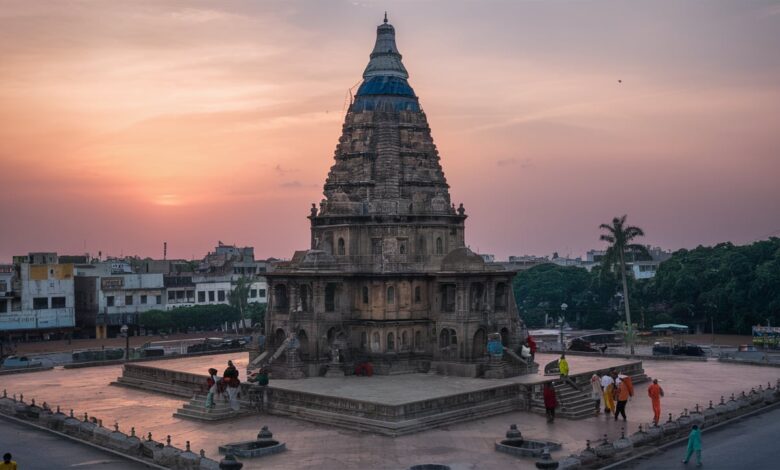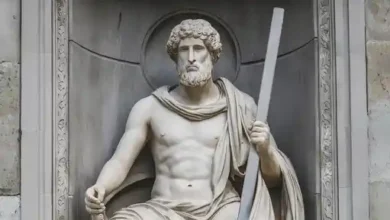Shiv Chowk: A Historic and Cultural Landmark in Indian Cities

Shiv Chowk is a term familiar to many across India, as numerous towns and cities have a prominent square or road junction bearing this name. While it might appear to be just another traffic intersection to the untrained eye, Shiv Chowk holds cultural, religious, and economic significance in the places it exists. Whether you’re walking through Shiv Chowk in Muzaffarnagar, Lucknow, or another city, the name evokes a sense of tradition, local commerce, and community gathering.
The name “Shiv Chowk” typically originates from the presence of a temple or statue dedicated to Lord Shiva, one of the principal deities in Hinduism. Over time, these chowks have developed into vital parts of the city landscape, becoming central points for markets, traffic flow, public festivals, and local identity. In this article, we will explore the importance of Shiv Chowk, not just as a name or a location, but as a symbol of daily life and heritage in many Indian towns.
Historical and Religious Roots of Shiv Chowk
Most locations named Shiv Chowk are rooted in religious significance. A chowk is traditionally a town square or major crossing, and when it’s named after Lord Shiva, it usually features a Shiv Mandir (Shiva Temple), or at the very least, a statue or shrine honoring the deity. These temples have historically acted as spiritual anchors for the surrounding area, drawing in devotees not only for daily prayers but also for special occasions such as Mahashivratri, Sawan month, and Shravan Somvar.
In earlier days, temples served as more than just places of worship—they were centers of community interaction, where locals would gather to discuss civic matters, celebrate festivals, and engage in cultural performances. In many towns, Shiv Chowk became the central location for organizing processions, public rallies, and civic announcements. The religious foundation of the area often gave way to a natural evolution into a civic space, deeply respected and maintained by the local population.
Commercial and Economic Importance
As Indian cities and towns expanded, Shiv Chowk often grew into a vital commercial zone, merging tradition with commerce. These chowks typically became major shopping hubs, with markets stretching across adjacent streets. Street vendors, small shops, and large showrooms often coexist side by side, offering everything from fresh vegetables and bangles to mobile phones and clothing.
The commercial buzz in areas like Shiv Chowk makes them perfect for small businesses and entrepreneurs. Daily footfall is high due to the constant flow of vehicles, pedestrians, and shoppers. It is not uncommon to find bank branches, ATMs, eateries, coaching centers, and utility service offices located near Shiv Chowk, making it a convenient destination for multiple needs. This economic activity reinforces the area’s importance, not just spiritually or culturally, but also financially for the city’s small business ecosystem.
Traffic, Connectivity, and Urban Life
One cannot discuss Shiv Chowk without mentioning its role in urban mobility. Almost every Shiv Chowk, especially in cities like Muzaffarnagar, Agra, or Varanasi, is located at a critical traffic junction. These chowks connect key roads and serve as central nodes that link residential areas, commercial zones, and transportation hubs like railway stations or bus stops.
With the rise of population and vehicles, these intersections have become increasingly crowded. Yet, they continue to function as lifelines of the city. Local administrations often prioritize Shiv Chowk for infrastructure upgrades, including signal installations, CCTV surveillance, street lighting, and pedestrian crossings. In some towns, beautification projects have been undertaken where statues of Lord Shiva are surrounded by landscaped circles, fountains, and decorative lights—turning traffic-heavy zones into aesthetically pleasing public spaces.
Despite traffic congestion, the vibrant atmosphere around Shiv Chowk captures the essence of everyday Indian urban life—colorful, busy, energetic, and full of stories.
Social and Cultural Significance
Beyond religious rituals and commercial hustle, Shiv Chowk is also a place of social memory. Many residents associate it with childhood trips to the temple, their first shopping experience, political rallies, or cultural parades. During festivals like Diwali, Holi, and Shivratri, Shiv Chowk becomes the epicenter of celebration. Streets are lit with lights, music fills the air, and local vendors set up temporary stalls selling sweets, toys, clothes, and religious items.
In some places, Shiv Chowk also becomes the go-to spot for public meetings, local speeches, or youth gatherings. It is where elders share stories, where children gather after school, and where workers stop for tea breaks. It is, in many ways, the social heartbeat of the town—a place where people come together naturally, regardless of their background, profession, or age.
Urban Planning and Future Development
Recognizing the importance of Shiv Chowk, many municipal bodies have included it in their smart city or city beautification plans. Development efforts often include the widening of roads, installation of digital signboards, construction of public restrooms, and establishment of regulated parking areas. Some chowks even feature solar-powered lights, open Wi-Fi zones, and heritage plaques describing the history of the area.
Future development also aims to preserve the cultural soul of Shiv Chowk while improving its functionality. Urban planners often consult with local historians, religious leaders, and shop owners to ensure that any redevelopment retains the spiritual and communal value that Shiv Chowk has always embodied.
Conclusion
Shiv Chowk is far more than a name or a physical location—it is a living symbol of India’s culture, religion, economy, and urban evolution. It stands at the intersection of tradition and modernity, offering both a place of peace and devotion and a center of dynamic, everyday life. Across towns and cities, Shiv Chowk remains relevant because it reflects who we are as communities: spiritually rooted, socially connected, and economically active.
As urbanization continues to reshape India’s cities, the preservation and modernization of places like Shiv Chowk will ensure that heritage and progress walk side by side. Whether you’re visiting, passing through, or just hearing about it, Shiv Chowk tells a timeless story of the Indian way of life.
❓ Frequently Asked Questions (FAQ)
Q1: What is Shiv Chowk?
Shiv Chowk is typically a central square or intersection in Indian towns or cities, named after Lord Shiva, and often features a temple or religious structure.
Q2: Why is Shiv Chowk important?
It serves as a cultural, spiritual, commercial, and traffic hub. Many civic events and festivals are also celebrated in and around Shiv Chowk.
Q3: Where can I find Shiv Chowk in India?
Multiple cities have a Shiv Chowk, including Muzaffarnagar, Lucknow, Varanasi, and others. Each may differ in appearance but shares cultural and social roles.
Q4: Is Shiv Chowk a good shopping area?
Yes. Most Shiv Chowks are surrounded by active local markets offering food, clothes, electronics, and other daily essentials.
Q5: What festivals are celebrated at Shiv Chowk?
Major Hindu festivals such as Mahashivratri, Sawan, Diwali, and Holi are celebrated enthusiastically at Shiv Chowk, especially near the Shiva temples.



